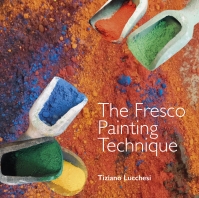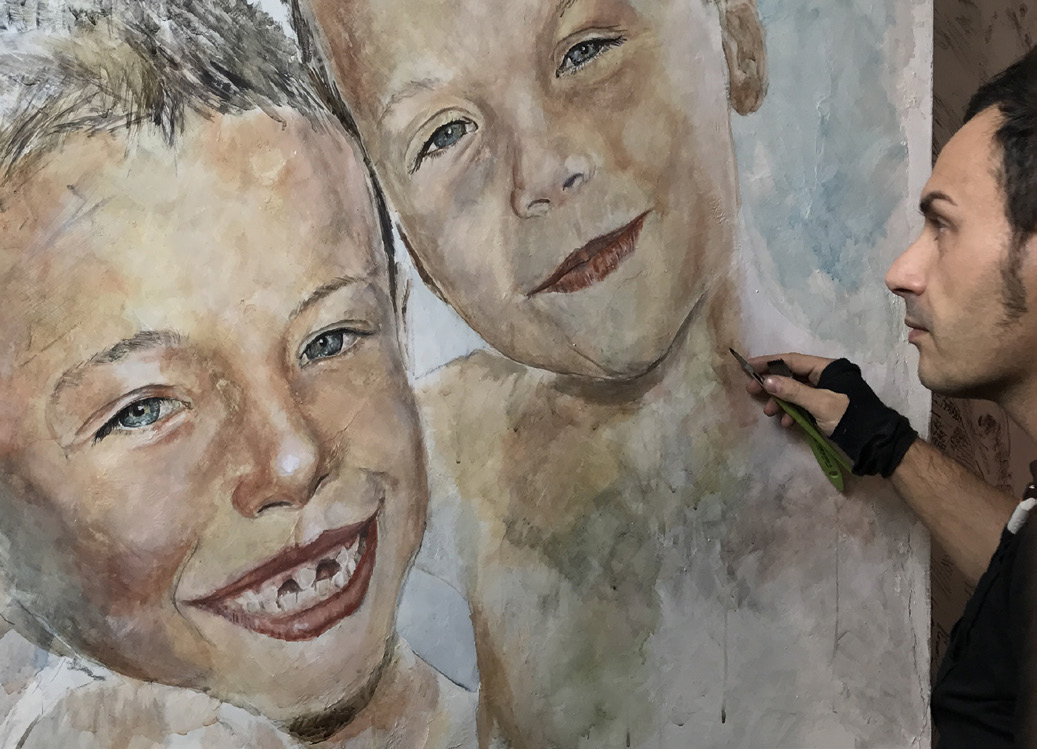
Anno/Year 2019
84 pagine/pages
88 illustrazioni/illustrations.
21x21 cm.
ISBN 978-88-3384-041-3
€20.00
Condividi la scheda di questo libro

 Tweet
Tweet
Tiziano Lucchesi
The Fresco Painting Technique
Through my discipline, I gained an understanding of why, in “the olden times”, fresco students studied with a master for more than 10 years. Not surprisingly, all of the most popular books on art techniques, including the best-known sources on this topic, stress the importance of dedication and study as the only way to become a master.
This illustrated volume is designed to clarify what could be less understandable for those who are not familiar with this technique and its materials. By downloading any QR code scanning application into an electronic device and framing the bar code at the end of each chapter, readers are directed to the corresponding audio-video website.
Despite its venerable age, this technique is not as acclaimed today as it once was. Over the centuries, fresco has been gradually overshadowed by other faster methods, although these methods have consistently proven to be more fragile and less durable.
When it comes to practice, fresco is nothing less than a thrilling experience. Whoever tries this technique will love it, not just for the sense of accomplishment that comes from overcoming its difficulties, but also because of the long-lasting, beautiful results that the finished work yields. Fresco demands our whole attention, both mental and physical. Yet, the art that comes from this creative process is certainly worth all of our efforts.
The best way to learn this art form is through firsthand apprenticeship with an experienced fresco painter. This sets the fresco technique apart from other types of visual arts (i.e., conventional easel painting). Such differences are obvious at each step in the process. For this reason, the following account can only serve as a general guide for fresco techniques.
My goal is simply to introduce both beginners and experienced artists to this kind of painting. If my booklet can make readers aware of this technique’s remarkable potential and teach them the basics, I will then consider my efforts successful.

Tiziano Lucchesi has a Laurea cum laude from the Academia di Belle Arti di Firenze and has in-depth knowledge of ancient wall painting techniques, as described in the best-known ancient art manuscripts.
He has been teaching since 2003 at Florence-based institutions such as SACI (Studio Arts College International), ISI Florence (International Studies Institute) and Istituto per l’Arte e Restauro Palazzo Spinelli.
Using both buon fresco and other mural painting techniques, he has painted murals since 1995 in historical settings commissioned by both public and private clients, including a medieval monastery, a town hall, the facades of buildings in historic centers, and the interiors of numerous villas, hotels, and cafes.
Tiziano has been commissioned as a wall paintings restorer since 2000 with participation in interventions of particular historic and artistic interest.
Finally, in his paintings he uses ancient and contemporary techniques.